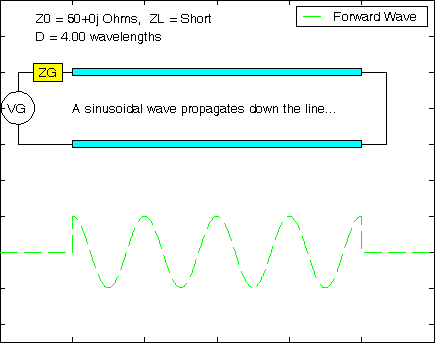 |
Short
Circuit Transmission Line |
 |
|
|
|
A transmission line with a short circuit voltage also reflects perfectly
from the end of the line, with G=-1. |
|
|
|
Short Circuit Voltages |
|
 |
|
|
|
Notes: |
- The standing wave interference pattern looks almost exactly like
the open circuit case, except the graph is shifted by
l/4 (to the left). Note how the load
boundary condition is satisfied; there are dynamic waves coming and
going at the end, but the total voltage drop across the end of the
line is always 0 V.
|
- If we were graphing current instead of voltage, the
forward-propagating and backward-propagating current waveforms would
constructively interfere at the load end of the line. Short
circuits allow current flow without a voltage drop.
|
- The infinite VSWR means that the minimum value for voltage
envelope is zero. This can only happen for short circuits, open
circuits, and purely reactive loads.
|
- If you squared the voltage envelope, you would get a sine wave
with a constant offset. What would be the period of this sine
wave?
|
